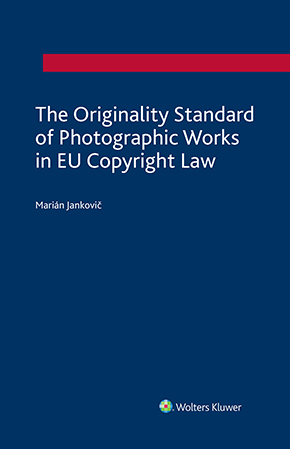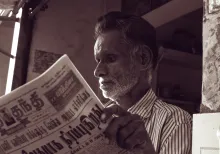France: Christian Louboutin’s shoes are also protected by copyright
September 1, 2025
The French brand Christian Louboutin is known to the general public for its refined luxury shoes, and to IP lawyers and scholars for the numerous cases in which it has obtained judgments confirming the protection of trade marks consisting of a red sole shape (see more here). Louboutin has, in particular, obtained a ruling from the EU Court of Justice affirming that a trade mark consisting of a color applied to the sole of a shoe does not fall under the prohibition on registering signs consisting exclusively of the shape, and that it is therefore protected (Case C‑163/16). The CJEU also handed down a preliminary ruling in a case involving Christian Louboutin on the one hand, and Amazon on the other, on the possible liability of online retail platforms (C-148/21, C-184/21: on the Kluwer Trademark Blog).
The Paris Court of Appeal handed down a decision on 18 September 2024 concerning trade mark law as usual, but also copyright law.
The facts of the case
Designer Christian Louboutin has assigned his copyright to his creations, as well as his trade marks and designs, to the company Paloïse. The latter in turn granted an exclusive license to the company ‘SAS Christian Louboutin’ for the exploitation of its copyright, trade marks and designs.
Christian Louboutin and companies Paloïse and SAS Christian Louboutin sued before the Paris Judicial Court the online retailer Otalons.com for the sale of shoes that they considered infringed their intellectual property rights.
On 2 August 2 2022, the court ruled that Otalons.com had infringed the French semi-figurative trade mark. On the grounds of copyright, the court ruled that several models of high-heels, sandals, and ankle boots were protected by copyright and that Otalons.com had committed acts of copyright infringement by selling similar models.
The court, however, dismissed Paloïse and SAS Christian Louboutin's claims for copyright infringement of the ‘Choca’ sandals and the ‘RLR’ sole, ruling that they are not original, and dismissed Christian Louboutin's claims based on his moral rights.
The plaintiffs appealed this decision.
Originality of shoes under French law
Article L.112-1 of the French Intellectual Property Code (‘IPC’) protects ‘the rights of authors in all works of the mind, whatever their kind, form of expression, merit or purpose’, without giving a definition of originality. Article L112-2 IPC gives an indicative list of works which states, at §14, ‘Creations of seasonal clothing and finery industries. Seasonal clothing and finery industries are those industries which, due to the demands of fashion, frequently renew the shape of their products, and in particular sewing, fur, lingerie, embroidery, fashion, footwear, glove making, leather goods, the manufacture of high-end or special haute couture fabrics, the production of finery and shoemakers and furnishing fabric factories.’ Shoes, along with other works of applied art, are therefore protected by copyright if they are original.
French courts have defined originality as the expression of the personality of the author (e.g. Court of Cassation, 30 April 2014, 13-15517) This definition is in line with European case law, which validated the French concept of originality, in particular in Infopaq (case C-5/08) and in Painer (Case C-145/10), where the CJEU ruled that ‘as stated in recital 17 in the preamble to Directive 93/98, an intellectual creation is an author’s own if it reflects the author’s personality’ (§88).
However, demonstrating the originality of shoe models is not easy, and while judgments appear as being very objective, a copyright infringement case often resembles a game of chance (see here). The brand Veja failed in its action to seek protection for one of its sneakers (Tribunal Judiciaire of Paris, 3rd chamber, 2nd section, March 22, 2024, No. 21/08049). The brand Repetto was also unlucky for several of its models (Court of Appeal of Paris, September 11, 2013, No. 2011/22046).
Originality of Christian Louboutin’s shoes: stepping into success (and not just with its court shoes!)
In this case, the court of first instance, in its judgment of 2 August 2022, took into account the designer's choice and displayed a certain poetic flair (admittedly by following the plaintiffs' arguments), and found that several (not all) of Louboutin’s shoes were indeed original. Here is a small selection of the court’s findings, some of which are rather amusing:
- ‘In designing this style, Christian Louboutin reinterpreted the glass slipper, dazzling it for all modern-day Cinderellas’ (the Degrastrass PVC high-heels, photograph taken from Louboutin’s website: https://eu.christianlouboutin.com):
- Christian Louboutin’s design gives ‘a particularly original impression when the shoe is worn, since the transparent upper disappears, revealing only the rhinestones, which looks like it is placed directly on the foot.’ (the Constella Bootie ankle boots);
- ‘With this shoe, Christian Louboutin wanted to evoke the enthusiasm and joie de vivre of the 1920’s Charleston style, by using textures and oversized accessories’ (the Bellacage sandals);
- ‘Christian Louboutin showcases street art techniques to give the brand's iconic shoes an unconventional twist, thus evoking the freedom of street artists’ (the So Kate Wallgraf high-heels) (translations by the author of this post).
In its judgment of 18 September 2024, the Court of Appeal upheld the judgment of the first court for all the models that the first court found to be original and reversed the decision where the first court had refused copyright protection, ruling that those models are also original. The Court of Appeal took into account the author's arbitrary choices, but, unfortunately for the reader, with less poetic findings than the court of first instance:
- The Choca sandals: a pair of stiletto heel sandals with a patent leather platform featuring a fairly wide rectangular strap at the toe, a heel counter at the top of which is attached a wide strap with a large buckle; said strap does not go all the way around the ankle and holds a thin leather strap at the front of the foot, crossed at the instep and rises above the ankle.
- The RLR sole: a thick, curved sole at the toe, formed of two main blocks separated by a pronounced arch, flex grooves dividing the heel block in two and the front block in three, raised grids appearing on the lateral part of the front block, a V-shaped notch cut out on the outer side of the heel block, revealing an insert, and the sole topped with a regular solid-colored line running from the toe to the heel and a midsole forming three undulations and enveloping the base of the heel.
Otalons.com did not appeal, and the decision is therefore final. A new victory for the luxury brand, here in the area of copyright.
You may also like













